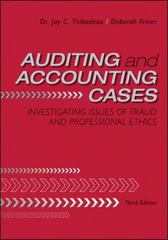Enron was created in 1985 by the merger of two gas pipeline companies: Houston Natural Gas and
Question:
Enron was created in 1985 by the merger of two gas pipeline companies: Houston Natural Gas and InterNorth. Enron’s mission was to become the leading natural gas pipeline company in North America. As several changes occurred in the natural gas industry in the mid-1980s, Enron adapted and changed its mission, expanding into natural gas trading and financing, as well as into other markets, such as electricity and other commodity markets.
In 1985 Enron had assets along the three major stages of the supply chain of natural gas: production, transmission, and distribution. Natural gas was produced from deposits found underground. The natural gas was transmitted via pipelines, or networks of underground pipes, and either sold directly to industrial customers or sold to regional gas utilities, which then distributed it to smaller businesses and customers. Some companies in the industry had assets related to specific activities within the supply chain. For example, some companies owned pipelines but did not produce their own gas. These companies often entered into long-term “take or pay” contracts, whereby they paid for minimum volumes in the future at prearranged prices to protect against supply shortages.
In early 1986 Enron reported a loss of \($14\) million for its first year. As a result, the company employed a series of cost-cutting measures, including layoffs and pay freezes for top executives. Enron also started selling off assets to reduce its debt. Nevertheless, Enron’s financial situation was still bleak in 1987. In that year Moody’s downgraded its credit rating to junk bond status.4 Impact of Significant Industry Change on Enron Enron faced significant change in its industry environment due to the government’s decision in the mid-1980s to deregulate the once highly regulated industry.
The government, which had dictated the prices pipeline companies paid for gas and the prices they could charge their customers, decided to allow the market forces of supply and demand to dictate prices and volumes sold. As part of this process, the government required that pipeline companies provide “open access” to their pipelines to other companies wanting to transport natural gas, so that pipeline companies would not have an unfair competitive advantage.5 Enron’s Natural Gas Pipeline Business Enron adapted by providing “open access” to its pipelines—that is, charging other firms for the right to use them. Enron also took advantage of the ability to gain such access to pipelines owned by other companies. For example, in 1988 Enron signed a 15-year contract with Brooklyn Union to supply gas to a plant being built in New York. Because Brooklyn Union was not connected to Enron’s pipeline system, Enron needed to contract with another pipeline company to transport the gas to Brooklyn Union. Enron was, therefore, assuming added risks related to the transportation of the gas. The long-term nature of........
Case Questions
1. Based on your understanding of inherent risk assessment and the case information, identify three specific factors about Enron’s business model in the late 1990s that might cause you to elevate inherent risk at Enron.
2. Comment about how your understanding of the inherent risks identified at Enron (in Question 1) would influence the nature, timing, and extent of your audit work at Enron.
3. Next, consider how the change in industry regulation and Enron’s resulting strategy shift would impact your inherent risk assessment for the relevant assertions about revenue. Finally, identify the most relevant assertion for revenue before and after Enron’s resulting strategy shift and briefly explain why.
4. Consider how a revenue recognition fraud might occur under Enron’s strategy in the late 1990s. Next, identify an internal control procedure that would prevent, detect, or deter such a fraudulent scheme.
Step by Step Answer:

Auditing And Accounting Cases Investigating Issues Of Fraud And Professional Ethics
ISBN: 9780078110818
3rd Edition
Authors: Jay Thibodeau, Deborah Freier





